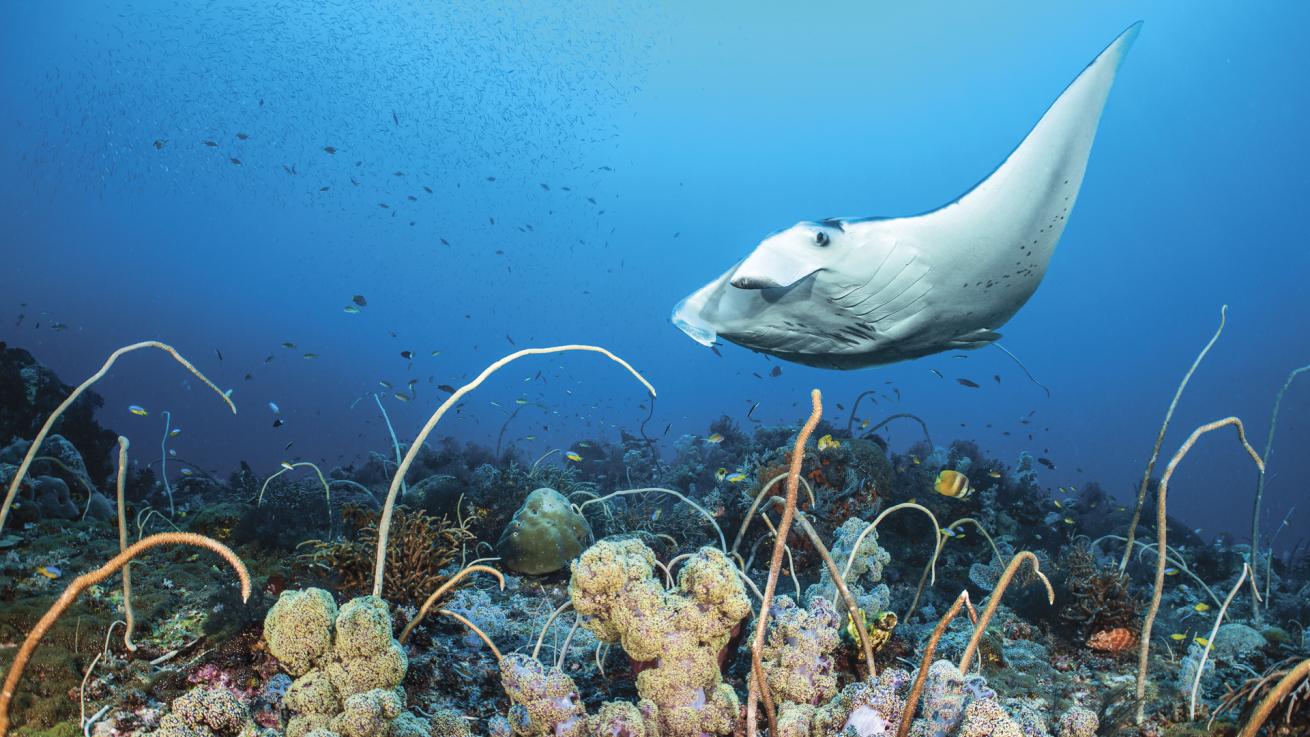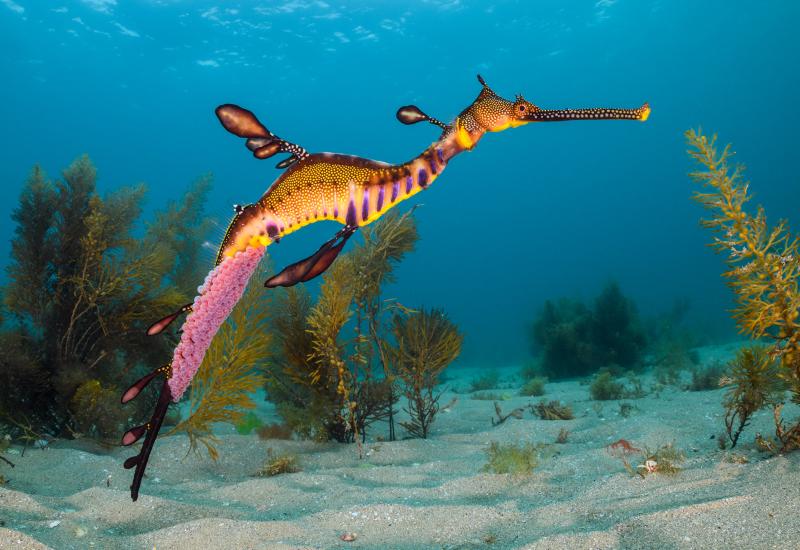An Intro to Rays—and How to Photograph Them

Alex MustardA manta ray elegantly soars above vibrant corals in Indonesia.
It’s stupid o’clock in the morning when my alarm erupts. I thought Cayman was supposed to be a vacation destination! But there is a method in this madness, as famed marine artist and scientist Guy Harvey has invited me to join him on a dawn trip to Stingray City. We arrive in half-light. Grand Cayman is flat, but the sun is yet to rise above it.
Normally people bring chopped squid to attract the rays, but Guy’s plan is strictly no bait. We just get in, stay still and wait. At first a pair, then five, and soon a squadron of 10 southern stingrays are flying in formation across the sandbar toward me. Their numbers build over the next 30 minutes, and by the end, there are more than 50 pirouetting around us over the shallow sand, swimming in formation.
Sharks and rays differ from other fish by having skeletons made of calcified cartilage, rather than bone. Sharks tend to hog the limelight, but you will probably be surprised that despite there being around 500 species of sharks, there are even more types of rays—close to 600 species. The smallest rays are little more than 4 inches across, while the largest, a fully grown oceanic manta, can grow up to 30 feet from wing tip to tip.
Related Reading: Jessica Pate Awarded May Sea Hero for Manta Ray Conservation
Unusual among fish, rays have a body flattened from the top, adapted for life on the seabed. Flatfish, like most fish, are compressed from the sides and are tipped over on their side, not flattened! Rays also have other adaptions for this type of life, such as spiracles: openings behind the eyes that let them breathe when their mouths and gills are buried in the sand.
After all this adaptive effort, it makes you wonder why some species took off again! But we should rejoice that they did because the graceful flight of bat rays, eagle rays and mantas is among the most captivating sights underwater.
Mantas may soar through the blue with balletic wings, but they also have the power to leap clear of the water. However, my love for these creatures stems from their brains, not their brawn. Mantas have unusually large brains. Theirs is 10 times larger than that of the other plankton-feeding giant, the whale shark. Their brain-to-body ratio more closely matches that of large mammals, so it should be no surprise that they have complex cleaning, feeding and mating behaviors and fascinating social interactions, and are often just as curious about us.
Cleaning stations offer the most reliable photo opportunities. The keys to lasting encounters are to follow your dive guide’s advice closely and give the rays space. Mantas are large and get stressed when we crowd their maneuvers. But stay tucked down low, and you’ll be rewarded with close and long encounters.
Related Reading: Do Dive Lights Harm Manta Rays?
Like sharks, rays can sense the tiny electric currents generated by other animals, which they use to detect food. Stingrays get their name because of the barbed spine, with an associated venom gland, which they have on their tail.
Electric rays have an even better deterrent because they are one of the few ocean animals that can generate a significant electrical discharge, up to 220 volts, to stun their prey. Fortunately, they are not trigger-happy. Being respectful, I’ve never had a concern when photographing them.
Sharks may get all the headlines, but rays really deserve our love too.










